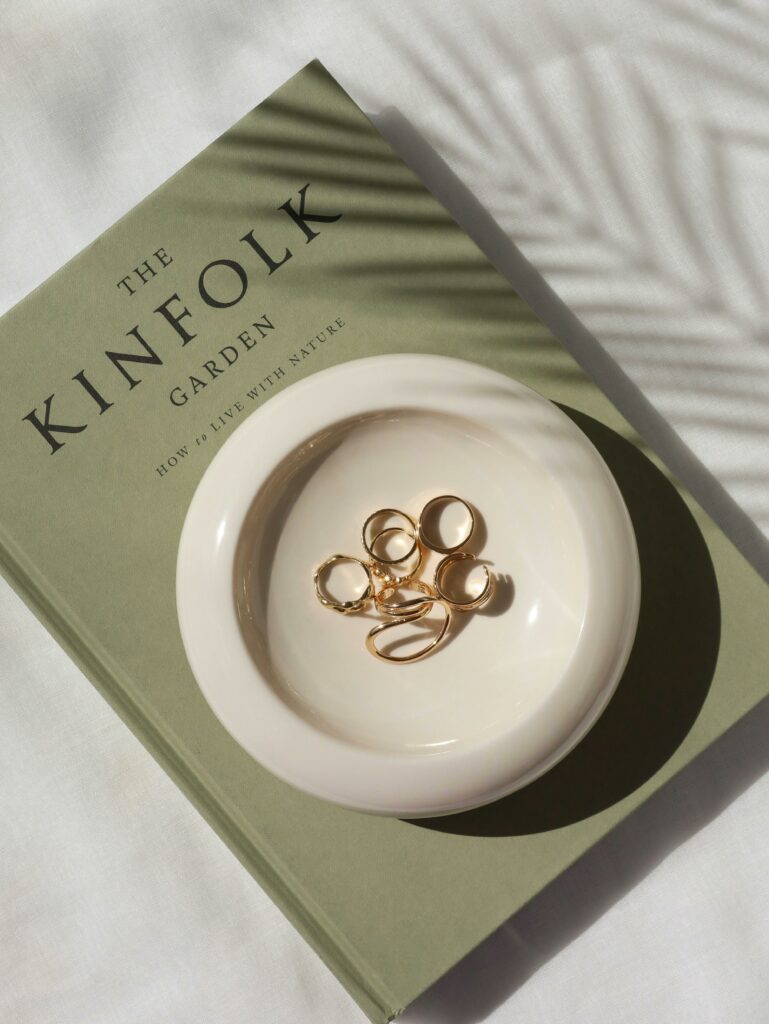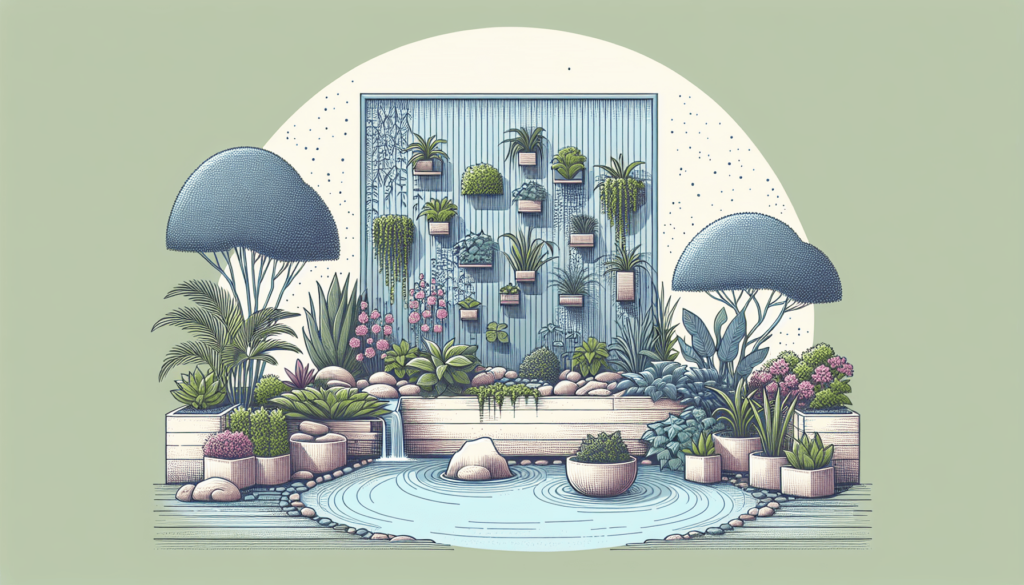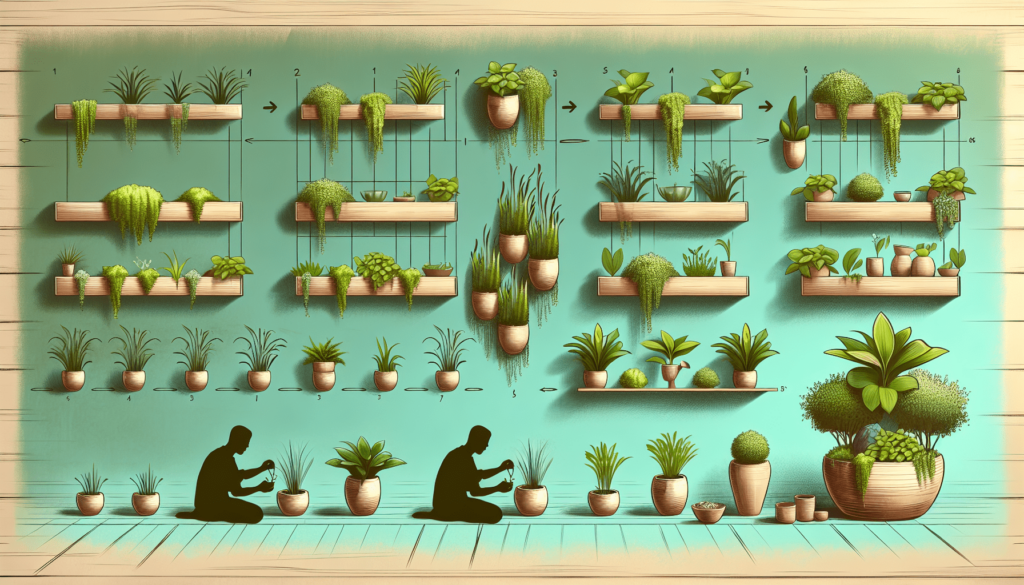Disclosure: As participants in the Amazon Associates Program, we earn from qualifying purchases. This means when you click on an Amazon link on this page and make a purchase, we receive a commission. This doesn’t affect the price you pay but it does help us to keep producing the content you love to see. We always aim for honesty and transparency in everything we do, and your support means the world to us. Thank you for helping us grow and for being part of our community.
Step into the world of zen with our guide on creating a serene oasis using vertical planters. Our website is dedicated to providing valuable insights and inspiration for vertical garden enthusiasts. From setting up your first vertical garden kit to exploring the latest trends in vertical horticulture, our articles cover it all. We offer detailed product reviews, practical tips, and tricks, and serve as a community hub for gardeners to share their experiences. Our mission is to empower you to transform your vertical spaces into lush green havens. Join us in creating a zen garden with vertical planters and enjoy a more peaceful and harmonious living space.
Choosing the Right Location

This image is property of images.pexels.com.
Consider the amount of sunlight
When choosing the location for your Zen garden with vertical planters, it is important to consider the amount of sunlight the area receives. Most plants used in Zen gardens thrive in full or partial sunlight, so it is essential to choose a location that provides adequate light for their growth. Observe the area throughout the day to determine how much direct sunlight it receives and choose a spot that meets your plant’s sunlight requirements.
Evaluate the space availability
Before setting up your Zen garden with vertical planters, evaluate the available space in your home or outdoor area. Consider the dimensions and layout to ensure that the vertical planters will fit comfortably and not obstruct any pathways or obstruct the flow of the space. Take measurements and plan accordingly to maximize the use of your available space.
Ensure proper drainage
Proper drainage is crucial for the health and longevity of your Zen garden plants. Choose a location that allows for adequate drainage to prevent waterlogging, which can lead to root rot and other plant diseases. If you are setting up your vertical planters indoors, ensure that there are drainage holes or a tray to collect excess water. Outdoors, make sure the chosen location allows for water to drain naturally into the soil.
Selecting the Vertical Planters
Choose the appropriate size and shape
When selecting vertical planters for your Zen garden, consider the appropriate size and shape for your chosen space. Take into account the size of the plants you want to grow and choose vertical planters that can accommodate their root systems. Additionally, consider the shape of the planters and how they will fit aesthetically with the overall design of your Zen garden.

This image is property of images.pexels.com.
Consider the material
Vertical planters come in a variety of materials, each with its own advantages and disadvantages. Consider factors such as durability, insulation, and aesthetic appeal when choosing the material for your planters. Common materials include plastic, metal, ceramic, and wood. Research each material and choose the one that best suits your needs and preferences.
Ensure stability and durability
Stability and durability are important aspects to consider when selecting vertical planters for your Zen garden. Choose planters that are sturdy and can withstand the weight of the plants and the elements. Ensure that they are made with high-quality materials and have a solid construction. This will help prevent any accidents or damage to the plants in the long run.
Creating the Zen Garden Design
Research different Zen garden styles
Before creating your Zen garden design, take the time to research and explore different Zen garden styles. Traditional Japanese Zen gardens, for example, often incorporate minimalistic features, such as rocks, gravel, and pruned trees. Modern Zen gardens may have a more contemporary design, with elements like water features, sculptures, and unique plant arrangements. Understanding the various styles will help you determine the aesthetic and atmosphere you wish to create.
Plan the layout and pathways
To create a harmonious Zen garden, careful planning of the layout and pathways is essential. Consider how the vertical planters will be arranged within the space, ensuring they are placed in a way that promotes balance and symmetry. Plan pathways that guide visitors through the garden, allowing them to experience its serene beauty at their own pace. Take into account the flow and movement within the garden to create a sense of tranquility.

This image is property of images.pexels.com.
Incorporate elements of tranquility
One of the key aspects of a Zen garden is the incorporation of elements that promote tranquility and relaxation. Consider including features such as a small water fountain or a peaceful seating area where visitors can meditate or reflect. Choose plants with soothing scents or textures to further enhance the feeling of calmness. By consciously incorporating these elements, you can create a Zen garden that provides a haven for peace and serenity.
Choosing the Right Plants
Select low-maintenance plants
When choosing plants for your Zen garden with vertical planters, it is beneficial to select low-maintenance varieties. Zen gardens are designed to create a peaceful environment, and plants that require minimal care will contribute to this atmosphere. Look for plants that are resilient, drought-tolerant, and don’t require frequent pruning or fertilization. This will make it easier for you to maintain the garden and ensure its longevity.
Consider the size and growth habit
Consider the size and growth habit of the plants you choose for your Zen garden. As vertical planters have limited space, selecting plants that won’t outgrow their allocated area is crucial. Look for compact, slow-growing varieties that won’t overcrowd the planters and maintain the overall balance of your Zen garden. Additionally, consider the potential height of the plants to ensure they won’t obstruct the view or overwhelm the space.
Choose plants with calming qualities
To enhance the calming and peaceful atmosphere of your Zen garden, choose plants with calming qualities. Look for plants that have soft textures, delicate flowers, or subtle foliage colors. Consider aromatic plants like lavender or chamomile, which release calming scents when brushed against or crushed. Incorporating these plants will further promote relaxation and a sense of tranquility within your Zen garden space.
Preparing the Vertical Planters

Clean and disinfect the planters
Before filling your vertical planters with soil or growing medium, it is important to clean and disinfect them. This helps remove any potential contaminants or pests that could harm your plants. Use a mild soap or bleach solution and scrub the planters thoroughly, ensuring that all surfaces are clean. Rinse them well and allow them to air dry before proceeding with the next steps.
Fill with high-quality soil or growing medium
Choosing the right soil or growing medium is crucial for the health and growth of your Zen garden plants. Use a high-quality soil mix that is well-draining, rich in nutrients, and suitable for the types of plants you have selected. Fill the vertical planters, making sure to leave enough space for the plants’ root systems to grow. Avoid compacting the soil too tightly as it can hinder proper drainage and nutrient absorption.
Add appropriate drainage layers
To ensure proper drainage, add appropriate drainage layers to your vertical planters. This helps prevent waterlogging and promotes healthy root growth. Start by adding a layer of gravel or small rocks at the bottom of each planter. This acts as a barrier, allowing excess water to drain freely. On top of the drainage layer, add a layer of horticultural fabric or a mesh screen to prevent the soil from washing away while still allowing water to pass through.
Arranging the Plants in the Vertical Planters
Consider the plant’s light and water requirements
When arranging the plants in your vertical planters, consider their individual light and water requirements. Group plants with similar needs together to ensure they receive adequate sunlight and watering. This will make it easier for you to maintain the garden and ensure that each plant thrives in its designated space. Place light-loving plants in areas that receive ample sunlight, while shade-tolerant plants can be positioned in areas with less direct light.

Create a balanced and harmonious arrangement
creating a balanced and harmonious arrangement of plants in your vertical planters is essential for a visually appealing Zen garden. Consider the size, shape, and color of each plant when placing them in the planters. Arrange them in a way that creates a sense of balance and symmetry, avoiding any overcrowding or uneven spacing. Step back and assess the overall composition to ensure a harmonious arrangement that enhances the beauty of your Zen garden.
Group plants with similar needs together
To simplify maintenance and ensure optimal growing conditions, group plants with similar needs together in your vertical planters. This allows for more efficient watering and fertilization, as well as better monitoring of each plant’s health. Keep plants with high-water needs in one planter and those with lower water requirements in another. This approach helps prevent overwatering or underwatering and promotes healthy growth for all the plants in your Zen garden.
Adding Decorative Elements
Incorporate Zen garden accessories
To enhance the overall aesthetic and ambiance of your Zen garden, consider incorporating Zen garden accessories. These can include items such as bamboo fences, lanterns, statues, or prayer flags. Choose accessories that align with the style and theme of your Zen garden and place them strategically to create focal points or points of interest. These decorative elements will add depth and character to your garden, elevating its overall appearance.
Use rocks and pebbles for a serene atmosphere
Rocks and pebbles are essential elements in Zen garden designs, symbolizing mountains, islands, or boundaries. Use smooth, rounded stones and pebbles to create patterns or raked lines in gravel or sand. These arrangements evoke a sense of serenity and represent water ripples or the meditative state of mind. Choose rocks and pebbles of different sizes and colors to add visual interest, but keep in mind to maintain an overall sense of simplicity and harmony.
Include water features for tranquility
Water features are a classic addition to Zen gardens, creating a soothing and tranquil atmosphere. Consider incorporating a small water fountain, a miniature pond, or even a simple tabletop water feature. The sound of flowing water can help mask unwanted noises and promote relaxation. Place the water feature strategically to ensure it becomes a focal point and enhances the overall Zen aesthetic of your garden.
Maintaining the Zen Garden
Regularly water and fertilize the plants
Maintaining proper watering and fertilization practices is essential for the health and vitality of your Zen garden plants. Monitor the moisture levels in the soil and water the plants accordingly, ensuring they receive enough hydration without being overwatered. Additionally, fertilize the plants at regular intervals using a balanced, slow-release fertilizer to provide them with the necessary nutrients for growth. Follow the instructions on the fertilizer packaging for the correct dosage and application method.
Prune and trim as necessary
Regular pruning and trimming of your Zen garden plants will help maintain their shape, control their growth, and remove any dead or diseased parts. Trim back any overgrown branches or foliage to ensure proper air circulation and sunlight penetration. Use clean and sharp pruning tools to minimize the risk of transmitting diseases between plants. By regularly pruning and trimming, you can keep your Zen garden looking tidy and ensure the plants remain healthy and vibrant.
Remove any weeds or pests
Weeds can quickly overpower and compete with your Zen garden plants, so it is important to remove them as soon as they appear. Regularly inspect the planters for any signs of weeds and carefully remove them, ensuring you remove the entire root system to prevent regrowth. Additionally, monitor your plants for any signs of pests or diseases. If any are detected, take appropriate measures to eliminate them, such as applying organic pest control methods or seeking advice from a gardening professional.
Creating a Relaxing Atmosphere
Add seating or lounging areas
To fully enjoy the tranquility of your Zen garden, consider adding seating or lounging areas where you can relax and unwind. Choose comfortable outdoor furniture or cushions that complement the overall design of your garden. Position the seating or lounging areas strategically, allowing for a view of the entire garden and providing a serene space to meditate, read, or simply enjoy the beauty of your Zen garden.
Use soft lighting for ambiance
Soft lighting can greatly enhance the ambiance of your Zen garden, especially during the evenings or when you want to create a more intimate atmosphere. Opt for warm, gentle lighting options like string lights, lanterns, or small LED spotlights. Place the lights strategically to highlight certain features of your garden, such as plants, pathways, or decorative elements. Soft lighting will add a magical touch to your Zen garden and create a welcoming space for relaxation.
Play soothing music or sounds
To further enhance the relaxing atmosphere of your Zen garden, consider incorporating soothing music or sounds. Choose gentle instrumental melodies, nature sounds, or calming meditative music. Set up discreet speakers or outdoor sound systems to ensure an immersive experience without overpowering the tranquility of the space. The harmonious blend of sights, sounds, and nature will create a truly serene environment for you to find inner calmness and peace.
Continuously Evolving and Adapting
Regularly rearrange plants and elements
To keep your Zen garden fresh and engaging, consider regularly rearranging the plants and elements within the space. This allows you to experiment with different layouts, textures, and colors, ensuring that your garden remains visually appealing and interesting over time. Rearranging plants and elements can help prevent stagnation and keep you inspired as you explore new possibilities within your Zen garden.
Experiment with new plant varieties
Continuously experimenting with new plant varieties is an exciting way to evolve your Zen garden. Research and discover new plant species that align with the principles of Zen gardening or possess unique qualities that pique your interest. Whether it’s introducing a flowering vine that cascades from a vertical planter or a rare succulent with intricate patterns, incorporating new plants can bring fresh energy and vibrancy to your Zen garden.
Modify the design based on personal preferences
As your preferences and tastes may evolve over time, feel free to modify the design of your Zen garden according to your personal preferences. Whether it’s adding new decorative elements, changing the layout of the pathways, or introducing a different color scheme, your Zen garden should reflect your own sense of tranquility and aesthetics. By continuously adapting the design, you can create a space that truly resonates with you and provides an oasis of serenity in your everyday life.
In conclusion, creating a Zen garden with vertical planters is a beautiful and soothing way to bring tranquility and balance into your living space. By carefully choosing the right location, vertical planters, plants, and decorative elements, and maintaining the garden with regular care and upkeep, you can create a serene oasis that offers a retreat from the stresses of everyday life. Remember to continuously adapt and evolve your Zen garden to reflect your personal preferences and explore new possibilities. Embrace the journey of creating a harmonious and peaceful environment, one vertical planter at a time.







